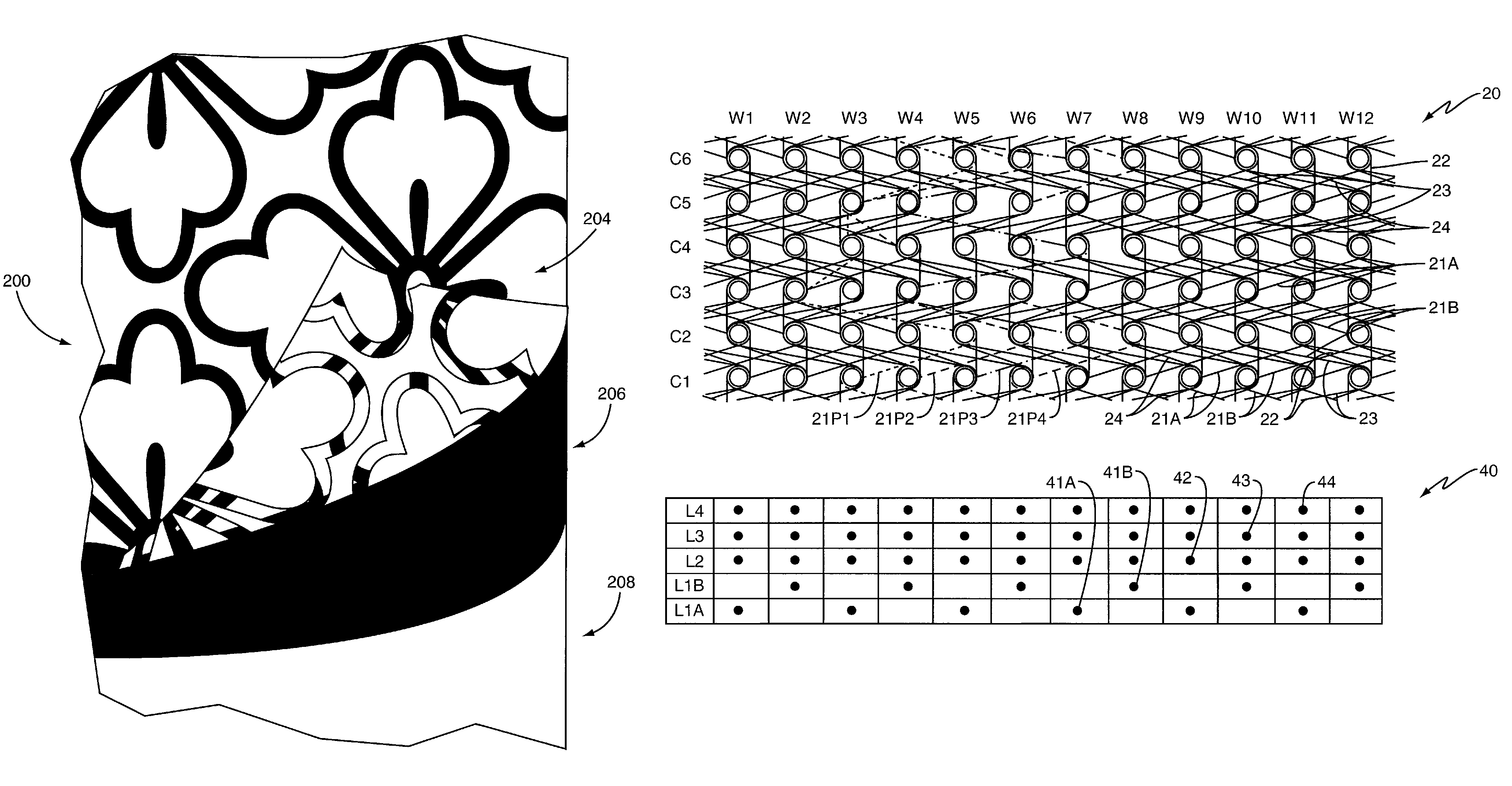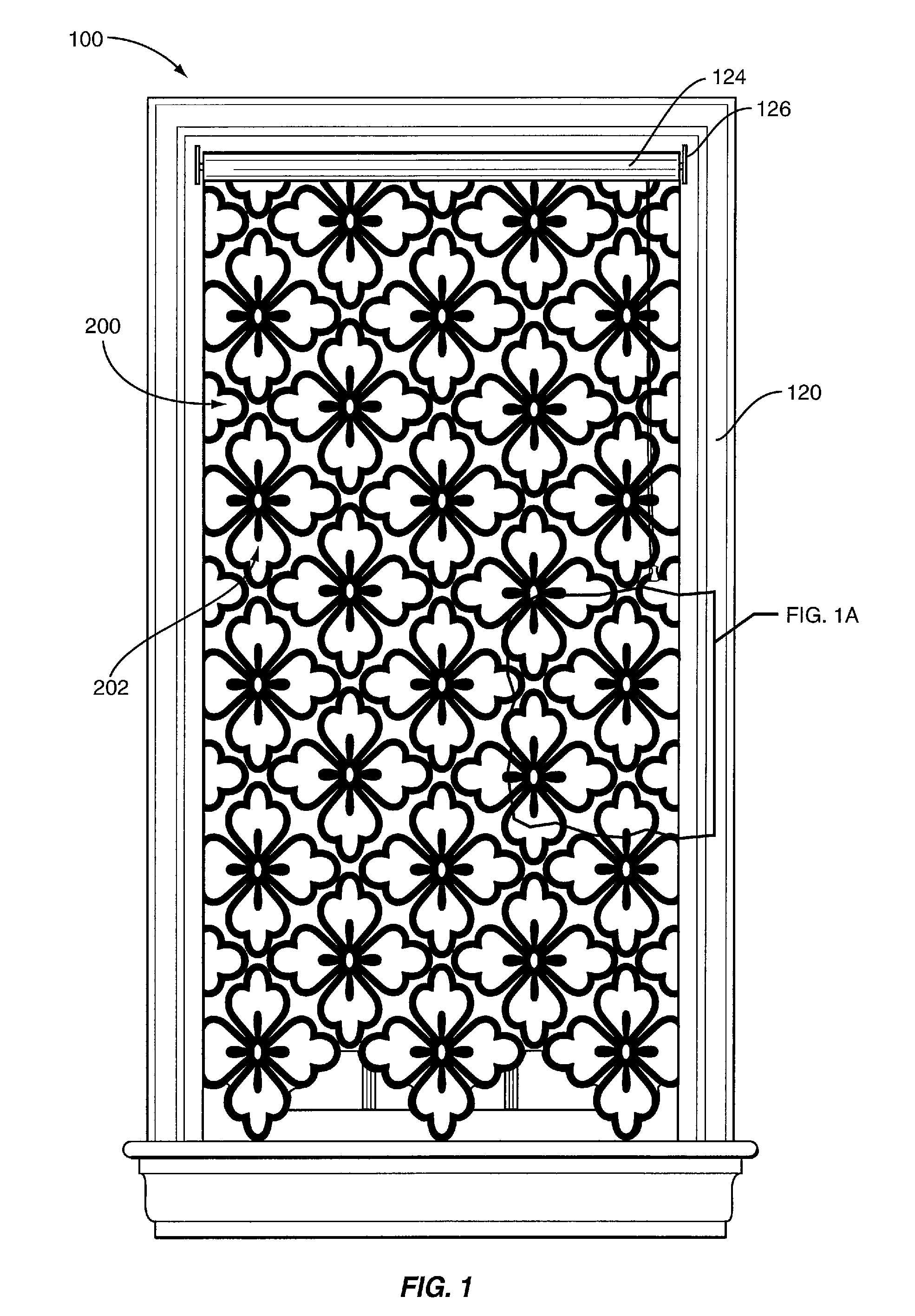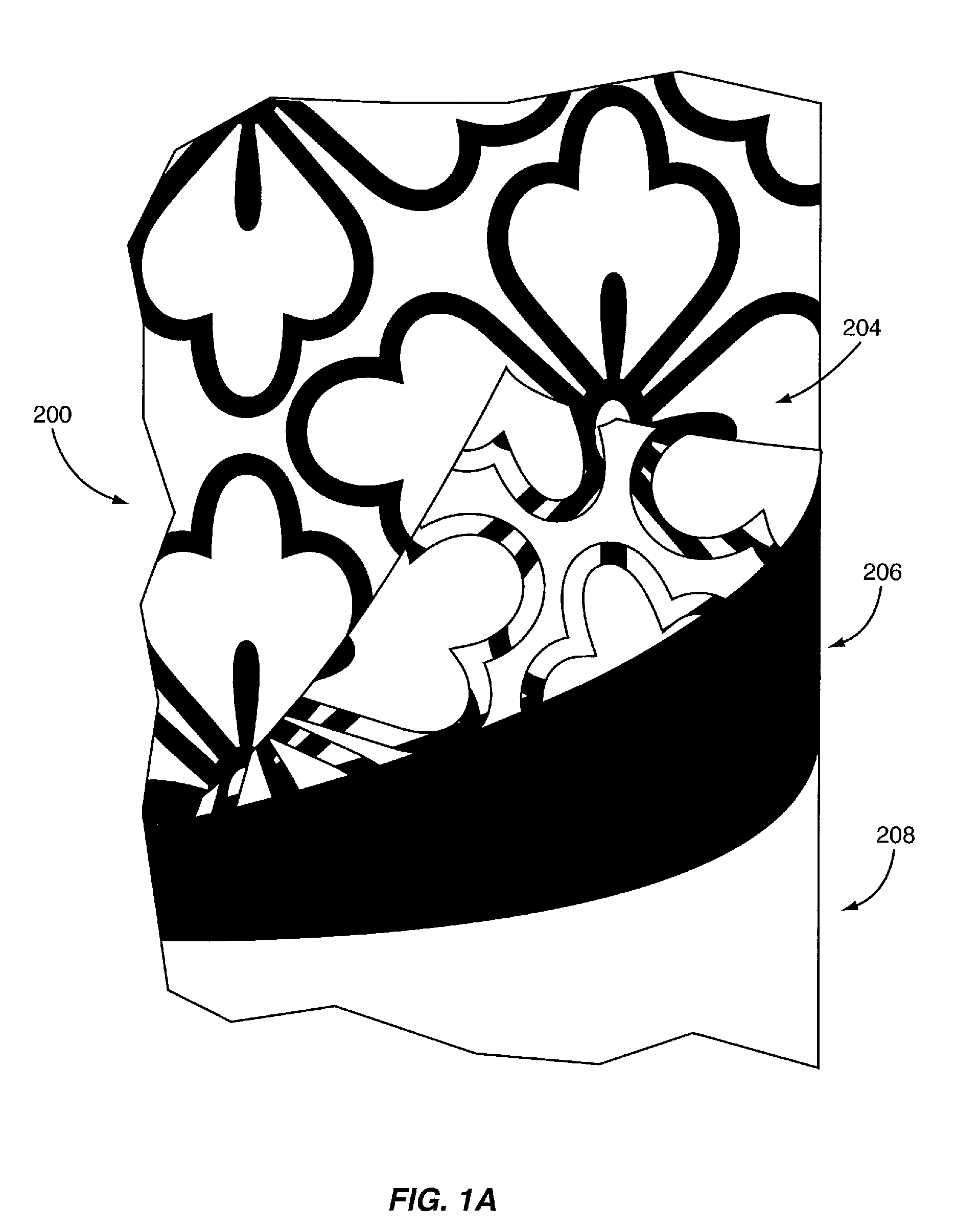Window shade
a technology for window treatments and shade materials, applied in the field of window treatments, can solve the problems of limiting the life span of laminated shade materials, additional manufacturing cost and time, and limited cutting alternatives
- Summary
- Abstract
- Description
- Claims
- Application Information
AI Technical Summary
Benefits of technology
Problems solved by technology
Method used
Image
Examples
Embodiment Construction
[0012]With further reference to the drawings, the window treatment of the present invention is shown therein and indicated generally by the numeral 100. Window treatment 100 comprises a non-laminated window shade 200 that may be utilized in various ways. For example, as shown in FIG. 1, window shade 200 may be configured as a roller shade supported by brackets 126 and roller 124. Other examples of treatments into which window shade 200 may be configured include roman shades and blinds. Window shade 200 includes a front layer 204, an intermediate layer 206, and a back layer 208 as illustrated in FIG. 1A. A room darkening or room dimming effect is provided by window shade 200 due to a limiting of the transmission of light through the shade by one or more of the layers 204, 206, 208. Further, a pattern 202 may be visible when viewing window shade 200. Pattern 202 is formed by configuring front layer 202 such that portions of intermediate layer 206 are exposed or revealed to form the pa...
PUM
 Login to View More
Login to View More Abstract
Description
Claims
Application Information
 Login to View More
Login to View More - R&D
- Intellectual Property
- Life Sciences
- Materials
- Tech Scout
- Unparalleled Data Quality
- Higher Quality Content
- 60% Fewer Hallucinations
Browse by: Latest US Patents, China's latest patents, Technical Efficacy Thesaurus, Application Domain, Technology Topic, Popular Technical Reports.
© 2025 PatSnap. All rights reserved.Legal|Privacy policy|Modern Slavery Act Transparency Statement|Sitemap|About US| Contact US: help@patsnap.com



